The OES Group of companies: Insight into the language of location within
surveying capabilities.
Meet John Koss.
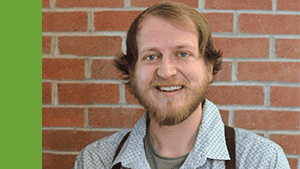
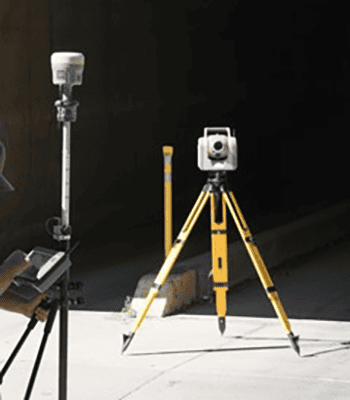
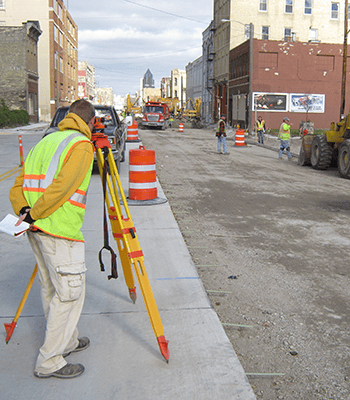
Let’s dive into recent project work. Where have you been recently that was exciting as a project?
That would be a steam tunnel project at Agriculture Hall at UW-Madison. This was a remarkable earthwork site, in a tight pedestrian corridor, surrounded by historic stone architecture. The OES survey team provided construction stake out and settlement monitoring for over a seven-month period. What I liked most about the project is that I was very close to home, which can be rare in surveying.
The settlement monitoring required weekly collection and I’m happy to announce that all of my observations were within tolerance. I monitored nine building faces across six buildings on top of the hill just south of Observatory Drive. The collection was more leg work than you might expect and required some acrobatics navigating the depths of the growing trench. I was very happy to deliver unambiguous reports full of clean numbers to the general contractor each Friday.
What does the term ‘clean numbers’ mean?
With settlement monitoring I’m using my Trimble SX10 Total Station to search for any movement down to the thousandth of a foot. As the surveyor, I must be careful with each set up to avoid false negative or false positive observations. Carelessness in instrumentation will result in inaccuracies – simply unacceptable. It’s difficult to be that meticulous in an environment where excavators, cement pumps, and dump trucks are loudly moving literal tons of material all around me. There’s a sense of confidence surveyors refer to when they describe their numbers as ‘clean’.
Considering that the Settlement Monitoring was a long project, what is the average length of a project?
My assignments with the OES Survey team have really been diverse. I would consider settlement monitoring a special project with a routine. Something that I jump on once a week in addition to my other assignments.
Most often the OES survey team provides full topographic collection and boundary work for Wisconsin Department of Transportation (WisDOT) or Wisconsin Department of Facility Development (DFD) design engineering. These projects will last weeks or months on site to develop the control network and collect tens of thousands of observations.
There are jobsites I mobilize to for survey stake out and the pace of the collection is affected by the progress of construction. Plenty of the time I’ll mobilize to a project to collect data that I will turn over in a day or two. These are typical examples of assignments that focus on a specific feature like storm sewers or vegetation.
Collecting vegetation? I thought surveying was mostly about surfaces and property lines. What happens with vegetation?
There are plenty of concerns with the proximity of vegetation to a roadway or the volume of vegetation for grubbing estimates. Landscape architects are always included in the design process for the DFD projects. This collection includes diameter, variation, and locations of trees, shrubs, and bushes. We do have a member of the survey team, Brad Pelzek, who was recently featured on Wisconsin Public Radio for his work, after hours, as a DNR certified ‘Champion Tree Inspector’. On the clock, Brad has performed several wetland delineations. He’s the expert when it comes to species identification, soil saturation, and documentation.
Land surveyors can spend months on a project and that project can include so many things. Do you become connected to these projects?
Yes, absolutely. Land surveying requires land surveyors to be very focused on… well… the land! We must capture virtually every visible land feature, condense all of that information, and parse that data until it’s a legible piece of paper called a map. There’s so much planning, time on site, and processing that strengthens this connection between surveyors and locations.
While on a project I walk to every tree, I walk along every curb, I walk around every building. Surveying can happen downtown in a city, in a riverbed under a bridge, or behind a tree line below a ridge – there’s a lot of travelling in this job. Surveyors must “Be here now” with each project.
Is there a unique quality in this connection for surveyors?
Precision is paramount in surveying and there’s nuance to the language surveyors use to describe land. I could never describe something as ‘Not too far that way’ and be accurate. My instructors at university emphasized that our descriptions of distance, direction, navigation, and waypoints should be effective for those who are visually impaired.. While communicating location surveyors use quantitatively reductive language so the audience cannot misinterpret our meaning.
The language of location eventually does become so specific that it can seem unintelligible. Without proper training “The southwest corner of the northwest quarter of the southwest quarter of Section 12, Township 18 North, Range 8 west” is an unsavory word soup. Fortunately, there are very focused surveyors working to eliminate ambiguity.
Precision, efficiency, and accuracy seem to be some of the key words in surveying. We’ve completed multi-million-dollar design projects for the Wisconsin DOT and have gathered survey information. How does this fit within the project work?
While preparing for our assignments the first question is always ‘What are the collection targets?’ Once our team understand the needs of the design engineers we develop a collection strategy. After arriving on site our team will make an initial assessment of the landscape, calibrate the instruments, and start our collection. I prefer to start at the east end of a job and work west – for no particular reason I guess.
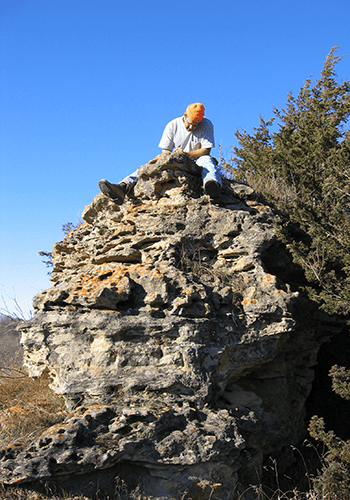

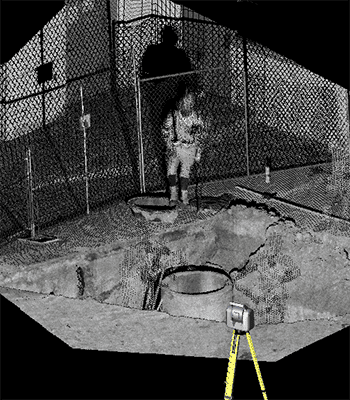
“Precision is paramount
in surveying and there’s nuance to the language surveyors use to
describe land.”
“My instructors at
university emphasized that our descriptions… should
be effective for those who are visually impaired.”
Whenever possible the OES Survey team will mobilize with our Trimble GNSS receivers. Our instruments run on the L5 satellite band; the most advanced satellite constellation in orbit today. I’m able to complete fieldwork reliably with this instrument and maintain my agility in difficult terrain. I cannot overstate the advantages of collecting data with GNSS in sites with dense land features.
When our clients need the greatest accuracy possible the OES Survey team is equipped with the Trimble Robotic Total Stations. These robust instruments have been cornerstones in surveying since the 1970’s and I really cannot imagine this profession without them. They operate on the same principles of historic theodolites. I’ve named my instrument Tammy and we’ve gotten a lot of work done together.
Now understanding that there are different methods for collection, based upon the location and site conditions, is there another method that we use within our surveying capabilities?
Yes. We fly a DJI Phantom 4 RTK quadcopter! A third member of the OES Survey team was just awarded their Part 107 FAA Remote Pilot License. We’ve been able to collect marketing photos, point clouds, and As-Built drawings with this instrument. In my opinion, orthophotography is the most valuable deliverable from the aerial system. Orthophotos cater to any person’s imagination and understanding of a location – they provide an intuitive perspective that clients really enjoy.
Additionally, it’s pretty common on our DOT projects that collection targets are too close to moving traffic. Safety is probably the number one reason I apply laser scanning in surveying. I’m able to set up my instrument, out of harm’s way, and collect a 3D model of an overpass or a beam guard. Back at the office I can extract those features and import the data to a conventional AutoCAD drawing.
Because the instruments and the software are always evolving, how has the industry changed over the past few years?
Standardized code sets would be my favorite change. Currently there are alphabetical codes for land features unique to the Army Core of Engineers, Departments of Transportation, or in house for different surveying firms. For example, typing ‘BOC’ could be interpreted as ‘Beginning of Curve’ or ‘Back of Curb’ depending on the client. The bottom of a river similarly could be ‘FL’ or ‘CHCL’ as ‘Flow Line’ or ‘Channel Centerline’. My favorite WisDOT code is ‘FWOD’ for ‘Fence Wooden’ – it always makes me laugh. I’m hopeful that digital workflows continue to be optimized and that one day soon there will be one code set for all English-speaking clients. Until then, the progress made towards uniformity has been awesome.
About Oneida ESC Group
We deliver customer-focused services worldwide and are a tribally-owned family of small businesses and 8(a) companies, eligible for direct awards, owned by ONEIDA NATION OF WISCONSIN.
Working with Oneida ESC Group of companies opens doors of opportunity for creative problem solving in today’s dynamic work environment. Visit https://oescgroup.com/ to find our line of services for partnerships and career opportunities.

